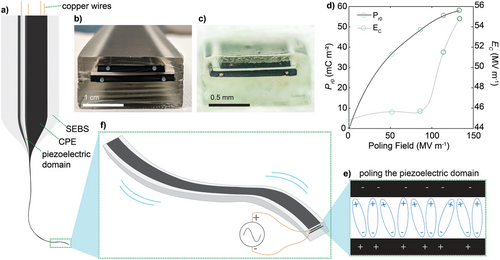Una colaboración interdisciplinaria de investigadores del MIT y otras instituciones desarrolló una tela de seda de un milímetro de espesor capaz de suprimir sonidos en habitaciones o espacios grandes; El material eléctricamente activo actúa como un “espejo de sonido” y puede reducir el ruido ambiental hasta en un 75% de dos maneras diferentes. En uno, la tela vibrante genera ondas sonoras que interfieren con un ruido no deseado para cancelarlo, similar a los auriculares con cancelación de ruido, que funcionan bien en un espacio pequeño como los oídos, pero no en recintos grandes como habitaciones o aviones.En la otra técnica, más sorprendente, la tela se mantiene quieta para suprimir las vibraciones que son clave para la transmisión del sonido. Esto evita que el ruido se transmita a través de la tela y silencia el volumen más allá. Este segundo enfoque permite reducir el ruido en espacios más grandes, como habitaciones o vehículos. Este trabajo está financiado, en parte, por la Fundación Nacional de Ciencias (NSF), la Oficina de Investigación del Ejército (ARO), la Agencia de Reducción de Amenazas de Defensa (DTRA) y la Fundación de Investigación de Antiguos Alumnos de Wisconsin.
Abstract
Whether intentionally generating acoustic waves or attempting to mitigate unwanted noise, sound control is an area of challenge and opportunity. This study investigates traditional fabrics as emitters and suppressors of sound. When attached to a single strand of a piezoelectric fiber actuator, a silk fabric emits up to 70 dB of sound. Despite the complex fabric structure, vibrometer measurements reveal behavior reminiscent of a classical thin plate. Fabric pore size relative to the viscous boundary layer thickness is found—through comparative fabric analysis—to influence acoustic-emission efficiency. Sound suppression is demonstrated using two distinct mechanisms. In the first, direct acoustic interference is shown to reduce sound by up to 37 dB. The second relies on pacifying the fabric vibrations by the piezoelectric fiber, reducing the amplitude of vibration waves by 95% and attenuating the transmitted sound by up to 75%. Interestingly, this vibration-mediated suppression in principle reduces sound in an unlimited volume. It also allows the acoustic reflectivity of the fabric to be dynamically controlled, increasing by up to 68%. The sound emission and suppression efficiency of a 130 µm silk fabric presents opportunities for sound control in a variety of applications ranging from apparel to transportation to architecture.
![]() Fuente: https://onlinelibrary.wiley.com
Fuente: https://onlinelibrary.wiley.com


